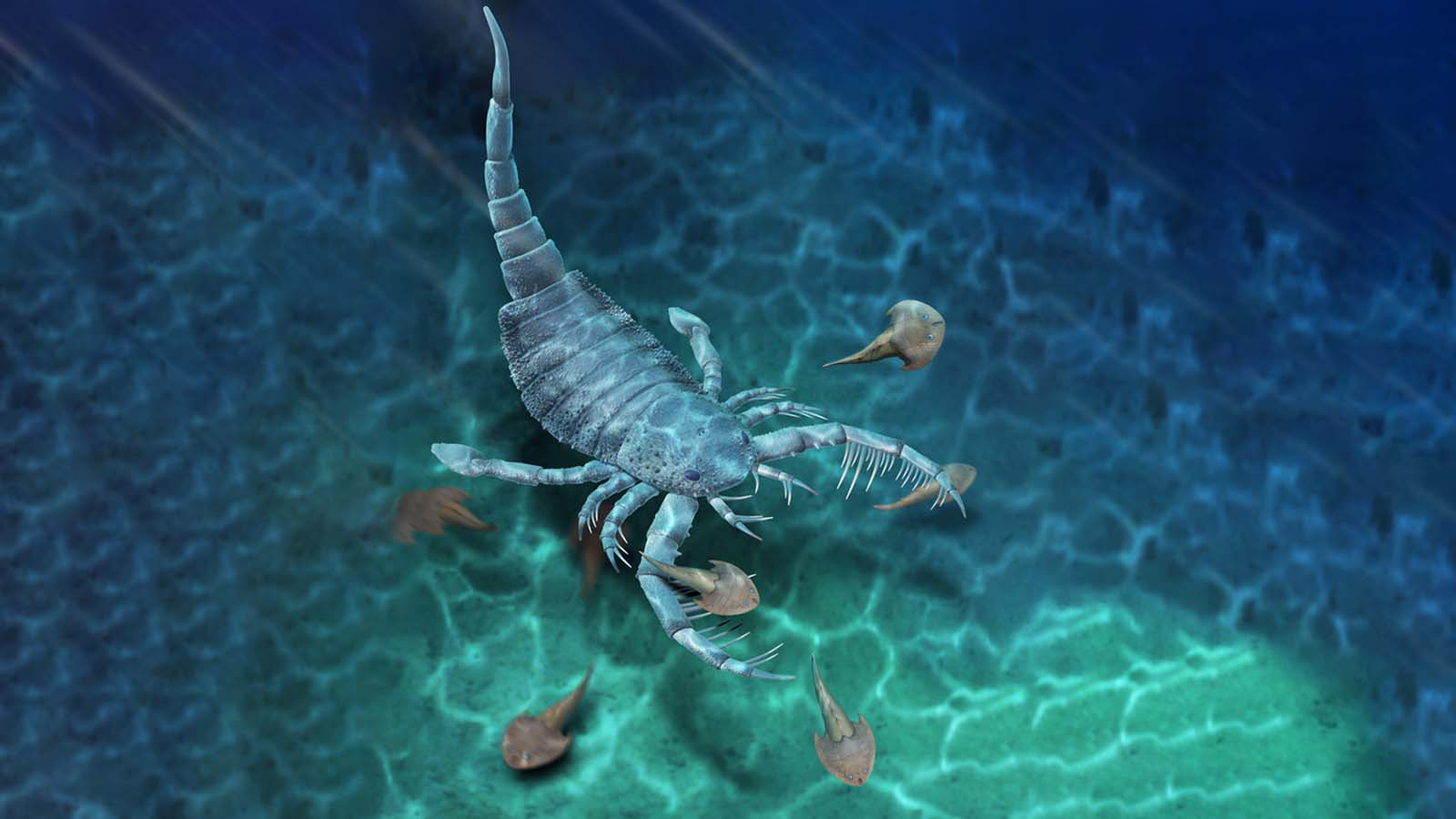Dog-sized scorpion once roamed the waters off prehistoric China

A prehistoric fossil of a sea scorpion the size of a dog has been uncovered in the Lower Silurian region of South China, the first time a large eurypterid has been found in this part of the world.
The fossil belongs to Terropterus xiushanensis gen. et sp. nov., a member of the Mixopterids, a group of eurypterids characterized by specialized arms lined with special teeth-like structures used to catch prey in a kind of basket catch as it stalked the sea floor.
"Our knowledge of mixopterids is limited to only four species in two genera," said professor Wang Bo from the Nanjing Institute of Geology and Palaeontology of the Chinese Academy of Sciences in a statement, "which were all based on a few fossil specimens from the Silurian Laurussia 80 years ago."
The discovery, reported in the Science Bulletin, expands our understanding of the distribution of such megafauna around the world and their incredible biological diversity.
T. xiushanensis was described as a being a meter in length, with particularly enlarged prosomal limb characterized by a unique arrangement of spines. It stalked the shallow waters off the primordial supercontinent of Gondwanan, which was one of the two pieces of the ancient singular landmass of Pangaea after it broke apart. It is believed to have lived between 443.8 million and 419.2 million years ago.
"Our knowledge of these bizarre animals is limited to only four species in two genera described 80 years ago: Mixopterus kiaeri from Norway, Mixopterus multispinosus from New York, Mixopterus simonsoni from Estonia and Lanarkopterus dolichoschelus from Scotland," the researchers wrote in the study.
"Our first Gondwanan mixopterid — along with other eurypterids from China and some undescribed specimens — suggests an under-collecting bias in this group," the researchers added. "Future work, especially in Asia, may reveal a more cosmopolitan distribution of mixopterids and perhaps other groups of eurypterids."
Sign up for breaking news, reviews, opinion, top tech deals, and more.
- Invasive cane toads too deadly even for Australia turn to cannibalism
- Animals likely ‘shape-shifting’ in response to climate change
- 'You bloody fool': An Australian duck learns to curse like a local
Analysis: megafauna weren't just dinosaurs and wooly mammoths
When it comes to prehistoric megafauna, the incredible diversity of species is really quite staggering.
While a dog-sized scorpion is definitely an eye-catching find in the fossil record, there are all sorts of ridiculously large critters that would appear like something out of a horror film were they to walk to earth or prowl the seas today.
This is remarkable in a lot of ways since evolution usually tried to reduce a species' physical body mass as much as possible, since the larger something is, the more energy and work the body must exert to sustain itself.
Why nature allows for such massive creatures is still a matter of debate, but it is believed that such creatures developed during a colder, more glacial epoch and slowly started dying off as the Earth's climate grew warmer over time. Which is probably a good thing, since few people alive would want to come across a T. xiushanensis stalking the ancient seas off the coast of modern day China.
Via LiveScience

John (He/Him) is the Components Editor here at TechRadar and he is also a programmer, gamer, activist, and Brooklyn College alum currently living in Brooklyn, NY.
Named by the CTA as a CES 2020 Media Trailblazer for his science and technology reporting, John specializes in all areas of computer science, including industry news, hardware reviews, PC gaming, as well as general science writing and the social impact of the tech industry.
You can find him online on Bluesky @johnloeffler.bsky.social